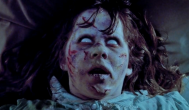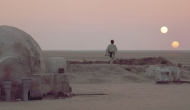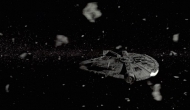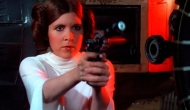This weekend marked the arrival of the Quentin Tarantino’s The Hateful Eight traveling Roadshow release in theaters, before the general release to follow on New Year’s Day. You may be wondering what exactly is meant by ‘Roadshow’ release, since the practice largely stopped back in the 70’s, and the answer is it means you’ll be paying $20 for a ticket. More than that however, it’s Tarantino’s effort to create a kind of “event’ cinema like in the bygone days when going to the theater really meant something, before the arrival of home entertainment systems and Netflix on the scene.
Indeed as the film’s special collector’s booklet informs us:
The exclusive 70mm Roadshow engagement of The Hateful Eight pays homage to and recreates the grand film exhibition style popularized in the 1950s and ‘60s and that brought audiences to theaters with the promise of a special event. Tacking place in the nation’s largest cities and grandest theaters, Roadshows presented a longer version of the film than would be shown in the film’s subsequent wider release, included a musical overture to start the show, an intermission between acts, and a souvenir program. Roadshows became the gold standard for exhibiting pictures like Lawrence of Arabia, Gone with the Wind, Cleopatra, Battle of Bulge, The Ten Commandments and Ben-Hur. This ultra Panavision 70mm Roadshow presentation of The Hateful Eight that you are now a part of is an experience that hasn’t been had in over fifty years.
70mm film in case you are wondering creates a unique aspect ratio of 2.76:1 and only a few films in history have been shot on this extra wide stock. (I also learned that from the accompanying booklet which provides still more information on the types of lenses used and other technical details of the film’s production and release.)
So there you have it.
With the recent opening of Stars Wars: The Force Awakens last week and now this, it’s been a good month for the collective cinematic experience and I think that’s great.
Now whether you could include this theater on 86th street in New York where I saw the film among the nation’s “grandest theaters” (you absolutely could NOT), remains a question, as does whether you could include The Hateful Eight in the same breath as Lawrence of Arabia and those other classic films (no is the answer here, but not for lack of trying).
The eighth film by Quentin Tarantino features some wonderful cinematography from Robert Richardson, a haunting score from Ennio Morricone, and some solid scenes that feature loads of blood soaked violence mixed with funny moments of black humor. However, I couldn’t call any of the performances great (they’re all good however). There are great moments certainly, but nothing that feels complete. The closest to great is probably veteran character actor Walter Goggins as “Sherif” Chris Mannix. And that perhaps has to do with the script, written by Tarantino, as always.
One of the things that makes a Tarantino film worth the price of admission is that he is allowed by virtue of his reputation as a genius (and box office clout) to do things that no other establishment filmmaker, let alone some newbie, is typically allowed to do. You can practically see the notes from the studio executives if it was anyone else: too violent, out of sequence, too many n-words, too much blood, too many flashbacks. All of these hallmarks of Tarantino’s style are again on display in The Hateful Eight. To the script’s credit, it lively and filled with many funny moments, but the problem is that much of it feels like an expository affair in which the characters recite each other’s backstories or their own. Several of the characters actually know each other either personally or by reputation, having been soldiers in the Civil War on both sides of the conflict, North and South, which seems oddly convenient since this is in the middle-of-nowhere Wyoming and as the script indicates an “undetermined time, six or eight or twelve years after the Civil War.” (Which makes it even more odd that Bruce Dern, as Confederate General Sandy Smithers, is still wearing his complete war uniform – maybe he never thought to buy any other clothes.)
I can barely remember where my closest friends might have gone to college yet alone the detailed back story of someone who I’ve merely heard of. “Why hello Mr. Mozart, your name strikes me as quite familiar. Oh yes, now I remember. I once heard some of your musical compositions at the home of a distinguished uncle when I was a boy. He told me that you were born in Salzburg, Austria in 1756, and that you were the youngest of seven children, that you yourself were a child prodigy schooled originally by your father. I also remember that my uncle said that you performed at the court of Maximilian III of Bavaria and that you composed your first symphony at the age of 8…”And so on if you follow me.
And if that last paragraph of mine feels like an indulgence, which it certainly is, there are similarly indulgent parts of The Hateful Eight that might have easily been cut from the film’s 3h 2m runtime that features a twelve-minute intermission.
That said, the plot follows thusly: John Ruth, played by Kurt Russell, is taking Daisy Domergue, played by Jennifer Jason Leigh, to Red Rock, Wyoming to face charges for murder and presumably hang. Along the way, they meet up with Major Marquis Warren, played by Samuel L. Jackson, himself a bounty hunter with three “dead or alive” corpses that he is also taking to Red Rock to get the bounty on. Alas, his horse has died. Warren joins Ruth and Domergue in their wagon as they attempt to flee a blizzard that is gaining on them through the desolate Wyoming wilderness. They next encounter Chris Mannix, played by Water Goggins, whose horse has also died leaving him stranded and freezing. He is on his way to Red Rock where is set to be sworn in as the new town sheriff. He joins the group, which is then forced to stop at an outpost known as Minnie’s Haberdashery to wait it out while the blizzard passes. Inside Minnie’s four additional men have already arrived seeking shelter from the storm: Bob, “The Mexican,” played by Demain Bichir, Oswaldo Mobray, “The Hangman”, played by Tim Roth, Joe Gage, “The Cow Puncher” played by Michael Madsen, and the previously mentioned Confederate General Sandy Smithers played by Bruce Dern.
Locked in together as the storm rages outside, a sinister game of cat and mouse begins as the characters converse, weaving a tapestry of outright lies and half-truths that finally erupts into a violent ballet of vomited blood and exploded heads. It plays like The Good The Bad and The Ugly meets Clue (Major Marquis Warren in the Haberdashery with a pistol, or Joe Gage by the coffee pot with a vial of poison).
Up until the film’s intermission everything flows fairly smoothly, setting up the central character backstories and conflicts. After the intermission things get a little bumpy with the inclusion of a flashback sequence that shows how the merry proprietors of Minnie’s Haberdashery were ruthlessly gunned down by the members of the gang lead by Daisy Domergue’s brother, Jody, played by Channing Tatum (who makes nine). The members of the gang as it turns out are the characters we have met in the Haberdashery previously (Bob, Joe Gage, Oswaldo Mobray) with the exclusion of General Smithers who just happens to be there and who is allowed to live as part of the plot to free Daisy from her chains.
The problem with the flashback sequence, which could have easily been cut and not affected the rest of the film one bit, is as follows: the relationship between Confederate General Smithers and Union Major Warren now seems incredibly coincidental (even more coincidental than it does to begin with – which is already a lot) considering above all that Warren claims to have murdered Smither’s son, after forcing the boy to fellate him (in a speech that I would suggest was actually quite boring), thus provoking Smithers to go for a gun and thus allowing Warren to execute Smithers “frontier justice” style. It also doesn’t make sense that General Smithers, with his avowed hatred of blacks, would be allowed to stay in an establishment that is black owned and operated, or that he would even accept such lodging in the first place.
What’s more, Jody’s gang operates under the idea that they’ll need to wait it out at the Haberdashery with Ruth, patiently searching for the perfect moment when they can kill him and free Daisy before Ruth can kill her. But the flashback massacre demonstrates that the gang are ruthless, quick and ferocious killers. Considering Ruth’s mobility problem, namely that Daisy is chained to his arm and could assist her liberators, and that there are four members of the gang in different parts of the Haberdashery, it seems that they could simply tap Ruth on the shoulder and then blow his head off and be done with it.
Anyway, but for this flashback I think the movie might have earned an A. As it stands it’s a B. The problem, as I imagine it, is that Tarantino now occupies a rarefied place where probably no one has the audacity to second guess any of his dramatic decisions. There simply isn’t anyone to say no, not even Harvey “I’m Going to re-edit this” Weinstein. And perhaps that is as it should be. At least with Tarantino there’s a singular vision on display, and whatever flaws are present they are his, rather than some committee trying to make a movie from polling data.
The Hateful Eight is another solid film in the legacy of one of the greats. Not his best, nor his worst – that dishonor would fall to the last film of his where Kurt Russell and Zoe Bell both appeared – Deathproof. Your time and your money won’t be wasted if you go see it, for as per Tarantino’s design, the film really did feel like an experience, an exciting big-screen experience that is increasingly hard to come by.
**To follow Shea Magazine on Facebook go HERE!**
**To follow Shea Magazine on Twitter go HERE**
**If you liked this article you should share it!**
Tony Shea ( Editor-in-Chief, New York)
Tony Shea is based in New York, having recently moved from Los Angeles after more than a decade on the sunny coast. His short films have won numerous awards and screened at major festivals around the world including Comic-Con. As a musician, he is the lead singer for Los Angeles rock n’ roll band Candygram For Mongo (C4M) candygramformongo.com who has been a featured artist on Clear Channel Radio’s Discover New Music Program and whose songs have been heard on Battlestar Gallactica (Syfy Channel) and Unhitched (Fox) among other shows and films.
- Web |
- More Posts (236)
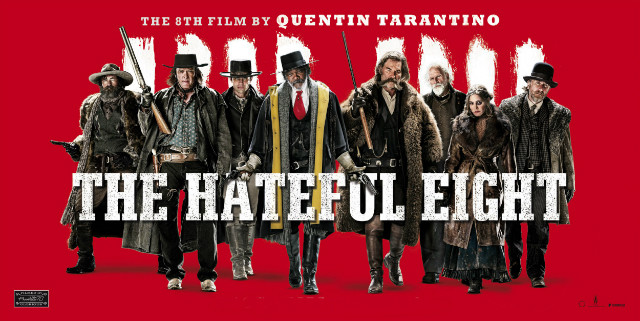

![Let's Go to Chinatown, Shall We? [PHOTOS]](https://sheamagazine.com/wp-content/plugins/special-recent-posts-pro/cache/MjAwMTAwbm9jaGluYXRvd24tMi1idy0=.jpg)
![Scenes from Washington Square Park - NYC [PHOTOS]](https://sheamagazine.com/wp-content/plugins/special-recent-posts-pro/cache/MjAwMTAwbm9JTUdfNDA1Mg==.jpg)


![Let's Go to the Empire State Building - Shall We? [PHOTOS]](https://sheamagazine.com/wp-content/plugins/special-recent-posts-pro/cache/MjAwMTAwbm9JTUdfMzkxNjE=.jpg)


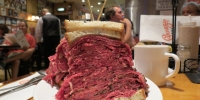



![Sunset - Pelham Shore Park - Long Island Sound [PHOTOS]](https://sheamagazine.com/wp-content/plugins/special-recent-posts-pro/cache/MjAwMTAwbm9JTUdfMzM3MC1SRVNJWkU=.jpg)
